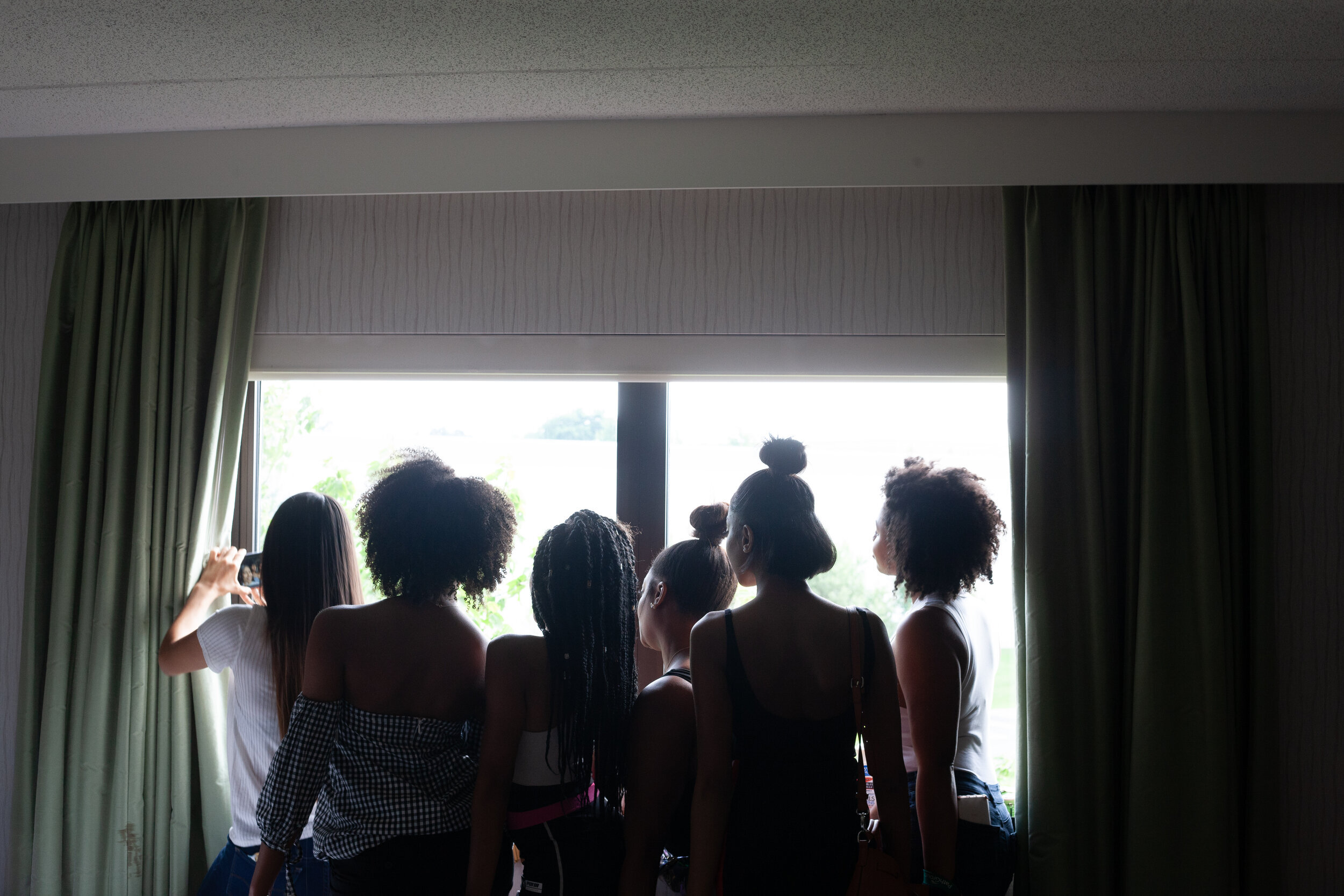1776 AB
USA, 2014-2019
Inkjet prints
61 x 91 cm each
6 image series
An Irresistible Destiny
2016-2021; 2024
Inkjet print
61 x 91 cm
Inkjet prints; diptych
61 x 91 cm each
Installation; Diptych
185 x cm each
Interactive timeline
Digital site
A 5-year long physical, legal, and chemical explorations of power and fictions, pushing the limits of what constitutes the self.
Drawing on history from artists such as Paul Preciado and Genesis P-Orridge, and the biblical story of Adam and Eve, the project included hormone therapy and five elective surgeries including gender reassignment surgery, vocal surgery and rib cartilage removal.
An interactive timeline acts as a real-time continuation of two identities - the transition of two people who were once real, becoming fictions.
Can We Be In Communion With Blue?
2018/2022
Installation
150 x 120 cm
Inkjet prints
40.5 x 193 cm; diptych, each
61 x 91 cm
Examining the relationships between boys and men, while living as one, in secret.
The subject of blue (see Gass’s On Being Blue) denotes both distributions of power and the privilege of neutrality - what happens when you embody the man? What happens if you say nothing?
The project began in 2018 with “The Friend”, and explores the moral boundaries of disclosure through a “passion play” based on the evangelical story, Heaven’s Gates, Hell’s Flames.
Aurorae Aureae
2013/2021
Video
10:57
Aurorae Aureae is an 8-part video installation reframing the ritual of karaoke with a new take on the “hero’s journey.”
The work is shaped by a form of short story in which the practice of rereading cultural or historical mythologies through a distinctly Black American lens is explored via the 19th century secret society, the Hermetic Order of the Golden Dawn.
Peopling of Countries
2014-2019
USA, Ireland, Türkiye
Inkjet prints
30 x 42 cm
60 x 84 cm
24 image series
Western Expansion, essay
Images taken across the USA, Ireland, and Türkiye, exploring the relational possibilities of topographical tropes, photographic history and the concept of Photographer as a “neutral” figure—an objective purveyors of knowledge about people and places.
Virtues
2014/2024
Steel box, felt, acrylic
A ubiquitous part of the interior architecture of the American church, the letter board is equally a symbol of announcement as it is allegory.
Continuing the exploration of the author as a “neutral” figure, Virtues re-contextualizes the traditional American southern gothic short story.
Elysian Fields
2014/2023
Vinyl decal, acrylic, wood,
Shiramine paper
200 x 75 cm
200 x 37 cm
Elysian Fields is a work that reads like a short story but is actually a transcript of overheard conversations. Framing the story as an ethnographically “objective” narrative in the spirit of anthropological writers such as Zora Neale Hurston, the power play between author and speaker and questions of authority are explored as the work asks what it means to claim authorship over the conversations of others.
Sarah Sarai Hagar Hajar
Harran, Türkiye
2024
Brass, concrete, glass, vinyl decal
240 x 105 x 24 cm (approx)
Sarah Sarai Hagar Hajar is a site-specific installation taking place in Harran, Turkey, 20 km north of the Syrian border a mythical home of the patriarch Abraham. The piece explores the appropriation of the story of Abraham through Hagar via black American theology and cultural mythology and the intersection of the Hajar story in Islam.
Ecce Homo is a series of seven “Knowledge Projects”, comprising installations of photography, writing, and body modification, plus an accompanying essay.
For five out of seven projects, viewers are taken across America, Ireland, and Turkey via text, installation and image, in the mythological tradition of “great men”—exploring the relational possibilities of topographical tropes and photographic history. Focused on the concept of becoming an observer, Ecce Homo utilizes the Photographer and the Author as “neutral figures”—ethnographically objective purveyors of knowledge about people and places.
The sixth and seven projects of the series turn inward, with a focus on bodily neutrality or body as landscape or “becoming a great man”; a 5-year long physical, legal, chemical creation of a “new self” and an exploration of the moral boundaries of disclosure.
Topographical interventions in the landscape
The Way of Sorrows, will consist of 14 site-specific roadside memorials/installations drawing reference from the biblical 14 Stations of the Cross.
Roadside memorials pepper the many highways that criss-cross the United States. They are particularly ubiquitous as well as elaborate in the southwest, where they stand out extremely against the empty landscape. I began photographing them as a curiosity and was fascinated by the ways in which, particularly outside the main highways, the roadside memorial takes on the form of an installation - an interactive space for both mourners and observers, often with little connection to the memorialized person. The memorial becomes a roadside attraction or spectacle, challenging and reshaping the landscape, taking utilitarian terrains and turning them into spaces for contemplation, visibility and aesthetic messaging.














